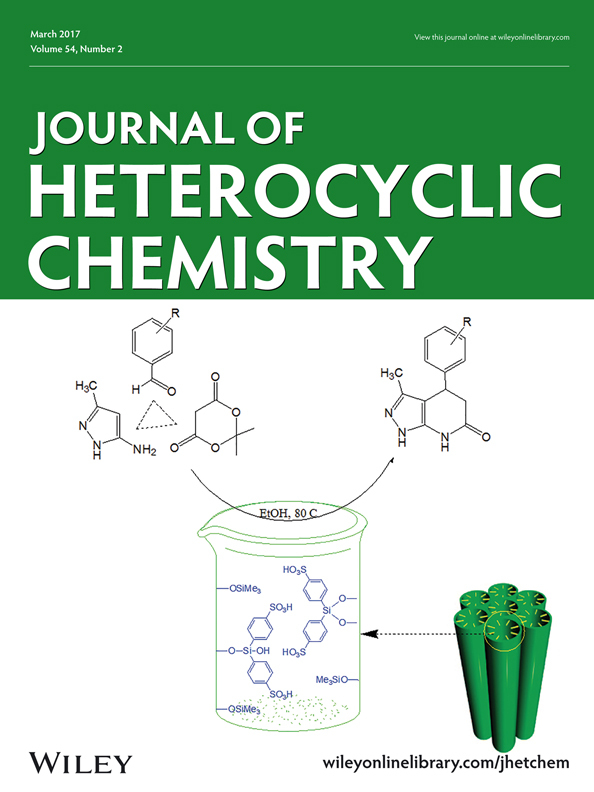New Heterocyclic Compounds Derived from 4,6-Diamino-3-cyano-2-methylthiopyridine and their Biological Activity
Abstract
Treatment of 4,6-diamino-3-cyano-2-methylthiopyridine (1) with aqueous KOH or hydrazine hydrate afforded the corresponding nicotinamide 2 and pyrazolo[3,4-b]pyridine 3, respectively. Reaction of compound 1 with bromine, sulfuryl chloride, formaldehyde, or aromatic diazonium salts gave 5-bromopyridine 4, 5-chloropyridine 5, dipyridylmethane 6, and azo dyes 7, 8, 9, 10, respectively. Compound 1 reacted with diketones to yield the corresponding butenylamino derivative 11 and amides 12, 13, 14, 15, respectively. Treatment of butanamide 13 with diazonium salts or a mixture of urea and aromatic aldehyde in the presence of drops of HCl as a catalyst yielded the corresponding arylhydrazones 16, 17, 18, 19, pyrimidines 20, 21, 22, 23, 24, and 1,8-naphthyridine 25, respectively. The potency of the results as anti-inflammatory and antifungal agents have been evaluated. The compounds have been characterized based on their spectral and elemental analysis.




